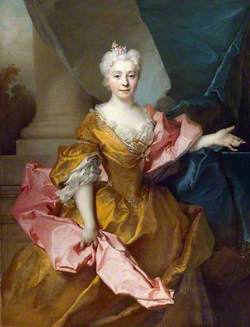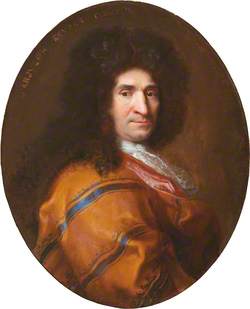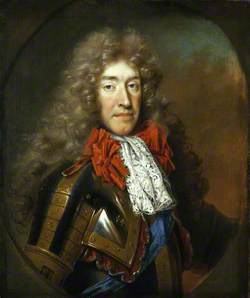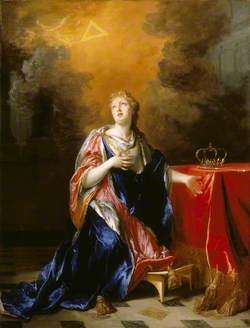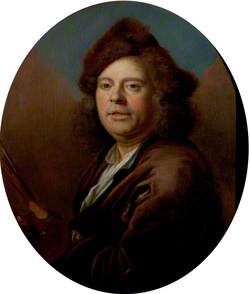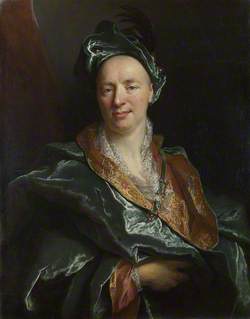How you can use this image
This image can be used for non-commercial research or private study purposes, and other UK exceptions to copyright permitted to users based in the United Kingdom under the Copyright, Designs and Patents Act 1988, as amended and revised. Any other type of use will need to be cleared with the rights holder(s).
Review the copyright credit lines that are located underneath the image, as these indicate who manages the copyright (©) within the artwork, and the photographic rights within the image.
The collection that owns the artwork may have more information on their own website about permitted uses and image licensing options.
Review our guidance pages which explain how you can reuse images, how to credit an image and how to find images in the public domain or with a Creative Commons licence available.
Notes
Add or edit a note on this artwork that only you can see. You can find notes again by going to the ‘Notes’ section of your account.
A half-length portrait to right in a feigned oval. He wears gold embossed armour and silver-edged red material appears beneath the pouldrons with red silk bows beneath his lace neckcloth. He wears a brown full-bottomed wig in the French style and the ribbon of the Garter. The portrait is believed to have been painted shortly after James's accession to the throne of Great Britain and Ireland in 1685. This is reflected in the depiction of the armour that incorporates the rose of England and the lily of France. As Duke of York during his exile in the Commonwealth period, James was a professional soldier in Europe and won a reputation for bravery. When his elder brother Charles II was restored to the throne in 1660 he became his Lord High Admiral until excluded from office as a Catholic under the Test Act of 1673.
As both Duke of York and King, James was a constant supporter of Pepys in his efforts to reorganise naval administration but his political skills after his accession did not equal his military virtues. His own open Catholicism, and his moves to reinstate Catholic power in England, were seen as a major threat to the Restoration settlement between the Crown and Parliament. In 1688 he was unceremoniously deposed and exiled in the largely bloodless 'Glorious Revolution' that put his Protestant daughter Mary (by Anne Hyde, his first wife), and her Dutch husband Prince William of Orange on the throne as the joint monarchs, William III and Mary II.
Title
James II (1633–1701)
Date
c.1686
Medium
oil on canvas
Measurements
H 76.2 x W 46.1 cm
Accession number
BHC2798
Work type
Painting


